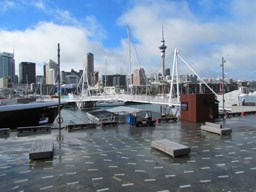The City of New Westminster isn’t closing the door on either of crossings being considered to link Queensborough and the Quay neighbourhoods.
The city has been consulting with the community about two options for a crossing: a bascule bridge (a drawbridge), and a structure that would be connected to the existing rail swing bridge. The city has about $6.3 million in gaming funds (known as development assistance compensation) for a bridge, but it’s estimated a drawbridge will cost $10 million and a connected bridge would cost $5.5 million.
Mayor Wayne Wright said council has asked staff to further investigate both options and report back to council, and to seek third-party funding to help finance a bascule crossing.
“We are in pretty good shape,” he said.
Wright noted that details about federal grants will be released in the new year, and the city wants to see if it can access any funds for the crossing.
“The city previously studied a number of high-level bridge options that would provide the required clearances above the river and address the desire for a structure that would not be disrupted by rail or train traffic,” stated a staff report. “The high level options were found to be much more costly than city resources could support, require users to travel longer distances and climb high heights, and result in structures that were physically and visually intrusive on surrounding neighbourhoods. As a result, these options were no longer pursued.”
Southern Railway of B.C. has indicated it is willing to consider a low-level crossing on or near its existing rail bridge.
During the consultation process, the city received 159 responses, and 155 people answered a question about their preferred option: 44 per cent preferred the bascule bridge; 24 per cent preferred the connected bridge; 22 per cent supported either option; and 10 per cent didn’t like neither option.
Coun. Jonathan Cote said he recognizes the bascule bridge costs more than what is available with the gaming funds, but he’d like to try to find other sources to “bridge that gap” financially.
“It would be better for the community,” he said of the bascule option. “There would be a lot less disruptions to the community. It would only have to be raised half as often.”
Cote is also concerned about attaching a pedestrian crossing to an older rail bridge that the city doesn’t own or have control over.
For now, both options will remain on the table, the city will seek third-party funding through any possible federal grant programs, and staff will do some more analysis of the two options.
According to Cote, staff has indicated the “drop dead” date for making a decision about which option to pursue is September 2014, so the city still has time to apply for grants and work through the process. Given the fact that the crossing will be an important piece of transportation infrastructure and has cost implications for the city, Cote said the city wants to have all the information it needs to make the right decision.
“There is a bit of time,” he said. “That gives us a bit of time to look at all the options.”



